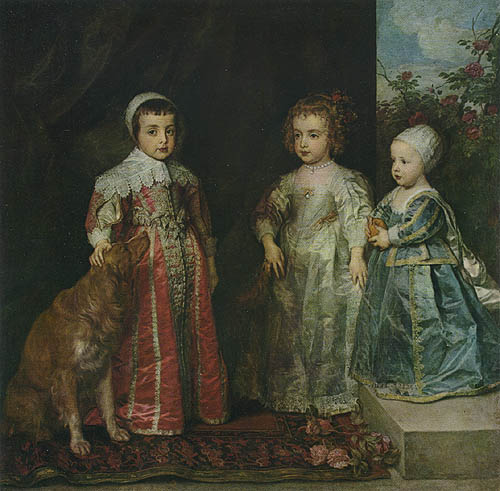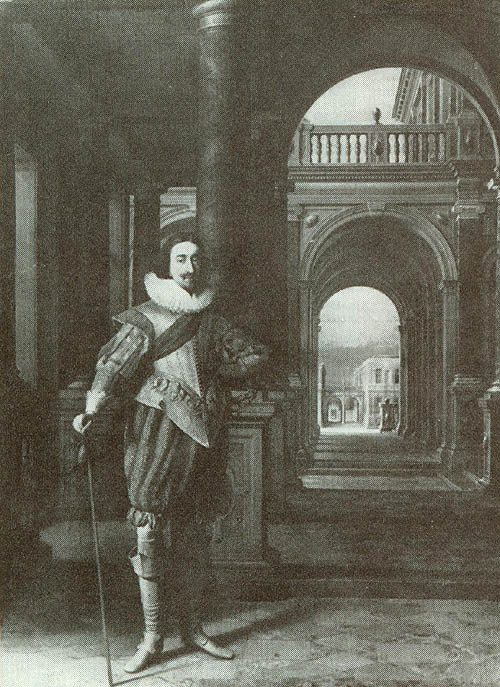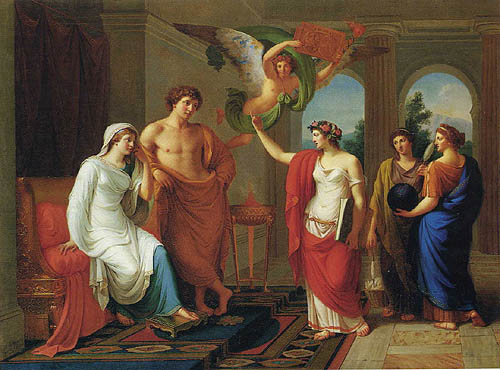 |
 |
 |
 |
 |
 |
 |
 |
 |
A Jacobite Gazetteer - TurinGalleria Sabauda |
|
The "Collezione Dinastiche" on the second floor of this important art gallery contain a number of paintings of Jacobite interest. The second floor is often closed; it is necessary to ask (sometimes with some persistence) for access. In Section II of the "Collezione Dinastiche" (1630-1730) on the second floor is displayed Anthony Van Dyck's group portrait of the three eldest children of King Charles I - Charles, Prince of Wales (later King Charles II), Mary (later Princess of Orange, and mother of the usurper), and James, Duke of York (later King James II and VII). Queen Henrietta Maria sent this painting of her children to her sister, Christine, Duchess of Savoy. Van Dyck later painted two other versions, one at Windsor Castle, the other in Dresden; there are also numerous copies. The version in Turin is widely regarded as the finest. 1
On the wall facing Van Dyck's "Children of Charles I" is a portrait of Charles I by Daniel Mytens and Heinrich Steenwyck. 2 Charles stands in an architectural fantasy. The oil on canvas painting measures 307 cm X 240 cm. It is dated 1626, and was presumably sent by Charles I to his wife's brother-in-law, Victor Amadeus I, Duke of Savoy.
In Section II of the "Collezione Dinastiche" are also displayed several portraits of the descendants of Charles I through whom the Stuart claim to the throne passed to the House of Savoy. At the entrance to Section II (if one enters through the main spiral staircase) is displayed a portrait which may be of Charles I's daughter Henrietta Anne, Duchess of Orleans (the portrait has more recently been re-assigned as of Christine, Duchess of Savoy, elder sister of Queen Henrietta Maria and aunt to Henrietta Anne). Also in Section II are two oval portraits (each 71 X 57 cm) of Henrietta Anne's daughter Anne Marie d'Orleans and her husband Vittorio Amadeo II of Savoy (the great-grandparents of King Charles IV and of King Victor); the portraits were painted in 1684, and are attributed to Ferdinand Voet. In Section III of the "Collezione Dinastiche" (1730-1831) is displayed Giuseppe Mazzola's "The Marriage of Peleus and Thetis" (Le nozze di Peleo e di Teti). Mazzola painted this work in 1789 as an allegory of the marriage of Victor Emanuel, Duke of Aosta (later King Victor) to Archduchess Maria Teresa of Austria. 3 At the top of the painting can be seen a winged figure bearing the combined coats-of-arms of Victor and Maria Teresa. The oil on wood painting measures 85.5 X 111.4 cm.
To the right of the Mazzola painting is a marble bust of King Victor by Giacomo Spada (1775-1834), 60 cm high. The gallery is located at Via Accademia delle Scienze, 6. It is open Tuesday, Friday, Saturday, and Sunday from 8.30 a.m. to 2.00 p.m., Wednesday from 2.00 p.m. to 7.30 p.m. and Thursday from 10.00 a.m. to 7.30 p.m. (Telephone: 39-011-4406903). Notes 1 Marziano Bernardi, La Galleria Sabauda di Torino (Turin: Edizioni RAI Radiotelevisione Italiana, 1968), 212. 2 Daniel Mytens was born in Delft about 1590, and died in 1647 or 1648. He moved to London in 1618 where he quickly became a leading court painter. He painted a number of portraits of Charles I including one in 1628 now in the collection of Princess Philip of Greece and Denmark, and another in 1631 now in the National Portrait Gallery in London. Heinrich Steenwyck was born in 1580 in Frankfurt am Main, and died in London before 1649. He was an architectural painter, responsible for the backgrounds of numerous court portraits. 3 Giuseppe Mazzola was an eighteenth century Turinese court painter. In Greek mythology the mortal Peleus was rewarded for his virtue by being given the sea-goddess Thetis as his wife; they were the parents of Achilles. Image 1 (The Children of Charles I): Bernardi, 213. Image 2 (Charles I): Onno ter Kuile, "Daniel Mijtens", Nederlands Kunsthistorisch Jaarboek (1969), 55. Image 3 (The Marriage of Peleus and Thetis): Arte di Corte a Torino da Carlo Emanuele III a Carlo Felice, edited by Sandra Pinto (Turin: Cassa di Risparmio di Torino, 1987), 166. |
|
This page is maintained by Noel S. McFerran (noel.mcferran@rogers.com) and was last updated July 21, 2008. |


